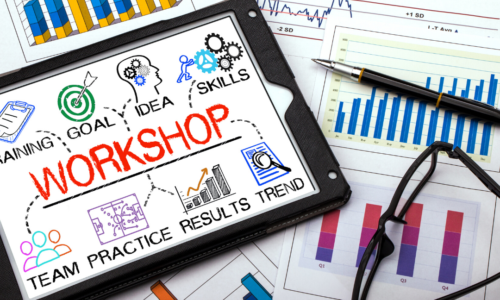ASSESSING THE LANDSCAPE
After completing this lesson, you will be able to:
1. Summarize the elements of effective feedback
2. Explain the key factors for successful change management
3. Identify the type of team members who should receive the most energy
The task below will be automatically checked off once you complete taking the quiz.
[progressally_objectives]
An organization must move as a single unit and be aware of the impact its movements have on those around it. Your people (staff, volunteers, members, and those with an interest or potential interest in the association) hold the intel necessary for such gliding movements.
Changes in culture span the inside and outside of an organization, making feedback a necessary component to understanding the effects of those changes. Failure to keep a pulse on those effects allows any damages, should something go off track, to grow deep and irreversible. Ideally, you want to know how people perceive your organization before you make any changes to its foundation (i.e., its Core Purpose and Core Values).
Feedback is essential to measuring the general mood of your staff, members, and even the general public. However, the quality of your feedback very much depends upon the tone the organization’s leadership sets beforehand. How well a leadership team listens to its people — both inside and outside the organization — goes farther than you might imagine in determining what they say, how they express it and how well leaders interpret it. Perhaps more important to obtaining reliable feedback, though, is the degree of regularity and transparency leaders use when expressing themselves.
FEEDBACK
The kind of culture that’s purposeful, transparent and has real leadership is founded on a demonstrable desire to help people grow. That is the only way you will earn people’s trust and gain consistently useful feedback, which enables dependable assessments of an organization’s internal culture and external climate.
Keys to giving and receiving feedback
Download your Open Garden guide to giving and receiving feedback!
Click each tab to learn more.
Obtaining Feedback
The worse your culture is, the worse your feedback is going to be. To avoid that problem, many organizations have preferred sticking their figurative heads in the sand and ignoring any feelings of discontent, frustration or apathy from their respective internal and external communities. With websites and apps like Glassdoor, LinkedIn, Google reviews, Foursquare and Yelp that allow individuals to rate their experience, it’s increasingly important to set a healthy tone to get sincere feedback before problems fester and grow into the kind you cannot easily resolve.
After you set an open and receptive tone, there are multiple ways to actually obtain the feedback.
Click each tab to learn more.
Responding to Feedback
Consider personally responding to every review.
For complaints, respond with something like, “What you’re saying here, I understand. This is why we did x, or this is why we didn’t do x.”
For generic or nonspecific feedback, respond by saying, “Can you add some more detail here? What you’re providing is interesting for us to understand, because it’s clearly a concern to you, and we’re sorry you’re not having a great experience.”
If they were a former employee who didn’t have a good experience, tell them you would like to get more information to ensure others don’t have the same experience.
End responses with, “Here’s my number,” and post your personal cellphone number in the message: “Call me anytime if you want to talk about this, or email me because I’d love to hear your thoughts in more detail.”
It doesn’t mean you agree with the reviews. Some may say things that are unfair. But as a leader, taking the time to write responses and make yourself available on a personal level, you can establish an atmosphere that encourages productive dialogue and conflict resolution.
The way a leader handles a complaint or problem might actually convert the person or others into your most loyal customers, members, employees, clients or advocates.
CHANGE MANAGEMENT
Inevitably, either from feedback, technological advancements or various other reasons, change will need to occur. How your association leads through these changes is the foundation for successful implementation.
Click each tab to learn more.
PEOPLE CHALLENGES
You may run into situations during a period of cultural change when certain people (particularly those in management and leadership roles) are not prioritizing trust among their teams. When that happens, you may have to make some tough choices about restructuring.
For any organization to be successful, it needs its people to be successful first.
People need to feel good about the job they are doing or they will stop showing up, in whatever way that may be. Over time, you will realize who really doesn’t want to be part of the organization’s new direction. Once you do, you must sit down with that person and talk openly with them to assess the reasoning behind their resistance, looking for ways you may be able to help them resolve whatever conflicts they have. Even if they were once a great asset to the company — and maybe in terms of their output they still are — if their attitude isn’t aligned with the organization’s Core Values and where it’s trying to go, it’s better for the individual, their team and the organization to remove them.
Remediation
By being focused on rehabilitating one particular individual or a small group of individuals, you end up spending the majority of your leadership energy on the people dragging the organization down rather than investing in the people who you should be trying to lift.
To determine who to focus on to help embrace change, let’s revisit the Values-Productivity graph.

Where to invest your time
You want to invest most of your time in the A players, who are values aligned and highly productive because you need to invest in their future growth to keep them A players.
You also want to invest in the B players, who are high in values alignment but somewhat low in productivity. For B players, most of your investment should center on training, so a person who shows a lot of promise can learn the skills they need to become A players.
Where to avoid investing your time
C players should receive less of your time and energy. You want to maximize your energy by focusing on your high-performing and high-potential team members, rather than on the lowest-performing ones.
It may sound insensitive, but it’s a necessary component to assessing the needs of an organization and improving upon how it functions. Most organizations spend a larger percentage of their energy dealing with their lowest performers, which motivates your higher performers. As hard as it may be on a personal level, if someone is not values aligned, that’s very unlikely to change and you need to confront the problem head-on before it turns toxic for both the individual and the organization.
SUMMARY
A work environment that encourages creativity and honesty gets conversations started. The one that supports the collaboration needed to build on those conversations gains the most from them, and ultimately the results it’s looking for, too. This environment naturally and necessarily extends to volunteer leadership, board members, committee participants and the membership at large over time. It’s critical that the culture being built is consistent within and outside the organization’s paid staff.

Activities to apply this lesson’s concepts
Click each tab for the activity.
Additional Tools
Download your Open Garden guide to giving and receiving feedback! Save and download or print.
CHECK FOR UNDERSTANDING
See if you understand the concepts by completing the quiz. Click Assessing the Landscape Quiz to begin.
[accessally_course_navigation prev_button='Previous' next_button='Next']
[progressally_note note_id='1' allow_attachment='no']
Share your progress!
[progressally_social_share type='facebook' share_id='1' post_id='42'][/progressally_social_share][progressally_social_share type='twitter' share_id='1' post_id='42'][/progressally_social_share][progressally_social_share type='email' share_id='1' post_id='42'][/progressally_social_share]
[progressally_progress_bar post_id="5606" width="100%" height="25"]

